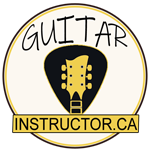
How to Build a Guitar Practice Routine that Fits Your Lifestyle
Learning to play the guitar can be a rewarding and fulfilling experience, but it requires dedication and consistent practice. However, finding the time to practice can be a challenge, especially for those with busy lifestyles.
In order to make progress and improve your skills, it’s important to establish a practice routine that fits your schedule and lifestyle. In this article, we will discuss how to build a guitar practice routine that is tailored to your individual needs, allowing you to make the most of your time and see real improvement in your playing.
Assess Your Availability and Commitment
The first step in building a guitar practice routine is to assess your availability and commitment to practice. Consider your daily schedule and identify pockets of time when you can dedicate to guitar practice.
This may include early mornings, afternoons, or evenings, depending on your work or school schedule. Additionally, consider how committed you are to practicing and improving your skills. Are you willing to set aside at least 30 minutes to an hour each day for practice, or are you only able to practice a few times a week? Understanding your availability and commitment will help you tailor your practice routine to fit your lifestyle.
Set Realistic Goals
Once you have assessed your availability and commitment, the next step is to set realistic goals for your guitar practice. Consider what you want to achieve with your practice sessions, whether it’s learning new songs, improving your technique, or mastering a particular style of playing.
Setting specific, achievable goals will help you stay motivated and focused during your practice sessions. For example, you could set a goal to learn a new chord progression each week, or to practice a specific scale for a certain amount of time each day. By setting realistic goals, you can ensure that your practice routine is effective and tailored to your individual needs.
Create a Practice Schedule
With your goals in mind, it’s time to create a practice schedule that fits your lifestyle. Consider the pockets of time you have identified for practice and allocate specific tasks to each session.
For example, you might dedicate 20 minutes to warm-up exercises and scales, followed by 30 minutes of learning and practicing new songs.
Alternatively, you could split your practice sessions into different days of the week, focusing on different aspects of guitar playing each day. By creating a practice schedule that is tailored to your availability and goals, you can make the most of your practice time and see real improvement in your playing.
Prioritize Technique and Fundamentals
When building a guitar practice routine, it’s important to prioritize technique and fundamentals. Regardless of your skill level, it’s crucial to dedicate time to practicing scales, chords, and exercises that will help improve your overall playing ability.
This may include practicing fingerpicking patterns, working on barre chords, or refining your strumming technique. By prioritizing technique and fundamentals in your practice routine, you can build a strong foundation for your playing and improve your overall skills.
Incorporate Variety and Fun
To keep your practice routine engaging and enjoyable, it’s important to incorporate variety and fun into your sessions. Consider learning a new song from your favorite artist, experimenting with different styles of playing, or exploring new techniques on the guitar.
Additionally, you could use backing tracks or play along with your favorite songs to make practice more enjoyable and rewarding. By incorporating variety and fun into your practice routine, you can stay motivated and inspired to continue improving your guitar skills.
Make Use of Technology and Resources
In today’s digital age, there are countless resources and tools available to help you build a successful guitar practice routine. Consider using apps, software, and online resources to enhance your practice sessions.
For example, you could use a metronome app to improve your timing and rhythm, or use a guitar tab app to access a wide range of songs and exercises. Additionally, you can take advantage of online tutorials, lessons, and instructional videos to learn new techniques and concepts. By making use of technology and resources, you can make your practice routine more efficient and effective.
Stay Consistent and Flexible
Building a successful guitar practice routine that fits your lifestyle requires consistency and flexibility. It’s important to stay committed to practicing regularly, even when life gets busy. However, it’s also important to be flexible and adapt your practice schedule as needed.
If you find that a particular practice routine isn’t working for you, don’t be afraid to make adjustments and try new approaches. Additionally, be open to incorporating new ideas and techniques into your practice routine to keep it fresh and engaging. By staying consistent and flexible, you can ensure that your practice routine is sustainable and effective in the long run.
Seek Support and Feedback
Finally, don’t be afraid to seek support and feedback as you build your guitar practice routine. Joining a community of fellow guitarists, taking lessons from a skilled instructor, or seeking feedback from friends and family can provide valuable support and encouragement.
Additionally, getting feedback on your playing and practice routine can help you identify areas for improvement and make adjustments to your practice plan. By seeking support and feedback, you can stay motivated and inspired to continue making progress in your guitar playing.
conclusion
In conclusion, building a guitar practice routine that fits your lifestyle is essential for making progress and improving your skills as a guitarist.
By assessing your availability and commitment, setting realistic goals, creating a practice schedule, prioritizing technique and fundamentals, incorporating variety and fun, making use of technology and resources, staying consistent and flexible, and seeking support and feedback, you can tailor your practice routine to fit your individual needs and see real improvement in your playing.
With dedication and a well-planned practice routine, you can make the most of your practice time and become a more skilled and confident guitarist.
